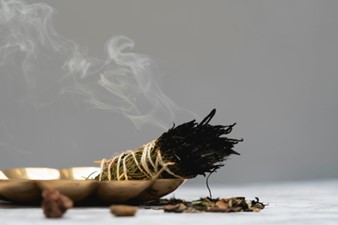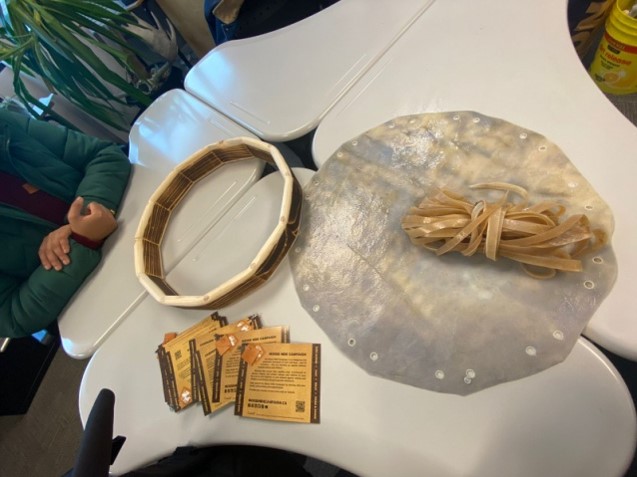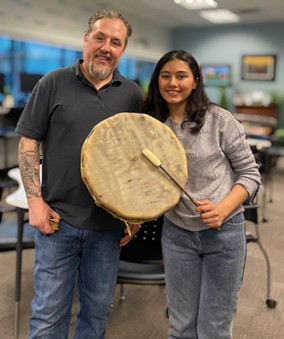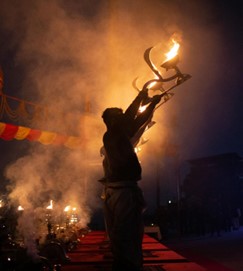Cultures around the world have always fascinated me, as the cultures that we practice today are a window to the past and the gateway to the future. Having been born and brought up in Nepal, one of the cultural goldmines in the world itself- I have always wondered how my lifestyle, beliefs and practices differ from the rest of the world and how that has shaped me as a person. It has been a dream of mine to travel, explore and experience other cultures and ways of being. Fortunately, I was selected as one of the recipients of the Global Affairs Canada International Scholarships Program and got the opportunity to be here in Kamloops as a visiting research student at Thompson Rivers University. On March 8th, 2024, marking the occasion of International Women’s Day, I was invited to a ‘Hand drum making’ session facilitated by Quanah George, who was introduced as a Tk’emlúps te Secwepemc member and knowledge keeper.

At the beginning of the session, we practiced a smudging ceremony wherein we cleansed our mind, body and spirit. It was a warm reminder of home, especially on the sacred day of Mahashivaratri. Even though I could not physically visit a temple for Mahashivaratri and offer my puja this year, the smudging ceremony allowed me to feel closer to home. The physical gestures of cleansing through the smoke came naturally to me- I had done it innumerable times before for the rituals of my own culture. It led me to an epiphany that irrespective of borders, language barrier, and several other man-made barriers; there is a language in common amongst all humans- the language of art and spirituality.

Then we began with the hand drum making steps. We were provided with the materials required to make a hand drum- a wooden hoop, rawhide, and a hide string. All the materials required for crafting a hand drum were neatly arranged on the table. I couldn’t help but feel the weight of their significance. These simple items held within them the stories of centuries marked by colonization- of land, people and culture. Considering that there was a period in history when even assembling the materials for the hand drum would be prohibited or perhaps even criminalized- I realized this session was more than just about making hand-drums. It was about reclaiming and ensuring the preservation of the culture that was so relentlessly sought to be erased.
The rawhide in front of me belonged to a buffalo- as shared by the session facilitator. I was intrigued at how the community utilized so much of the animal with minimal waste. I then reflected on the practices of big-name companies in the meat industry and thought about the sheer amount of waste they produce and the blatant disregard to the ecosystem where profit is concerned; and I felt a deep respect toward indigenous communities who place great value and respect to the life of every sentient being as well as the ecosystem. As we began weaving the hide through the wooden hoop, we were told that the drum holds a sacred value for the indigenous community. The music of the drum is not just for entertainment but it is also used as a spiritual tool- it can help connect people and the divine, heal, and help us be in tune with our spirit. Having seen cultural practices of my own people where music plays such a crucial part in helping people come together, express their emotions, and offer prayers to the divine- I could resonate with the sentiment of music being sacred. All in all, I am beyond grateful to have been a part of this wonderful experience and I would love to learn more about the culture of the Secwepemc community.


